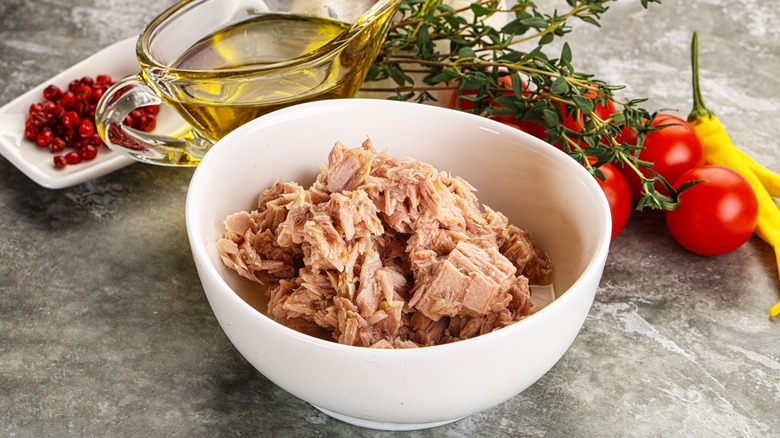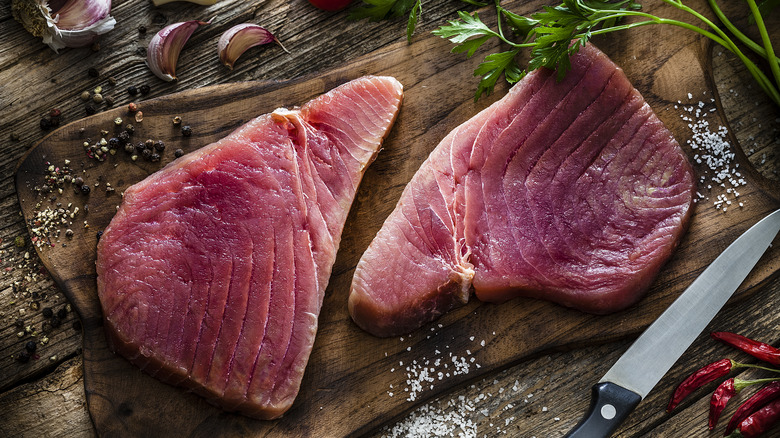Dishes Where Canned Tuna Is Actually Better Than Fresh (And Ones It's Worse For)
The saying "fresh is best" may apply to many foods. However, when it comes to tuna, the canned version can sometimes be a better option, according to chef and Ocean Ambassador Charlotte Langley.
"There are certain dishes where canned tuna outshines fresh, thanks to its soft, flaky texture," Langley, who is also the CEO of Langley Foods, told Food Republic. "The convenience and flavor ... make it perfect for tuna salad. Whether you're using mayo or Greek yogurt, canned tuna mixes beautifully for a creamy, satisfying salad."
Langley also added that it's ideal for tuna melts, pointing to how the flaky tuna and melty cheese work well together. However, she noted that for both dishes, it's important to look for the Marine Stewardship Council (MSC) or Aquaculture Stewardship Council (ASC) logo on the label of your canned tuna. Either certification ensures you're purchasing sustainably harvested fish, which supports traceable fishing practices and helps protect marine ecosystems.
In addition to the logo, there are a few other things to look for when buying canned tuna. For the most flavor, reach for tuna packed in high-quality olive oil. Additionally, if you're looking to avoid tuna with the highest mercury levels, skip the albacore or "white" tuna, and opt for "light" tuna, which is often skipjack. If you're unsure where to start, check out our guide to the best (and worst) canned tuna brands to buy.
When not to use canned tuna
While canned tuna may be perfect for whipping up Ina Garten's favorite comfort food sandwich, the tuna melt, there are times when it's better to use fresh fish. Charlotte Langley suggests considering the intended mouthfeel of the dish when deciding between fresh and canned tuna.
"Avoid using tinned fish in recipes that depend on the fresh texture of fish, like sashimi, ceviche, or seared fillets," she told Food Republic. "For these dishes, you need the delicate, flaky texture of fresh fish, which tinned varieties can't provide."
When choosing fresh tuna at the store, look for labeling that indicates it was responsibly sourced. The easiest way to ensure you're getting the freshest fish is to give it a sniff test. If it actually smells like fish, give it a pass. Instead, aim for fish with a mild scent. You can also press the fillet with your fingers to ensure it's firm and check that it has an even color, free of any signs of dryness or discoloration. Once you've found the freshest fish, store it properly in the fridge and cook it as soon as possible for the best flavor.


